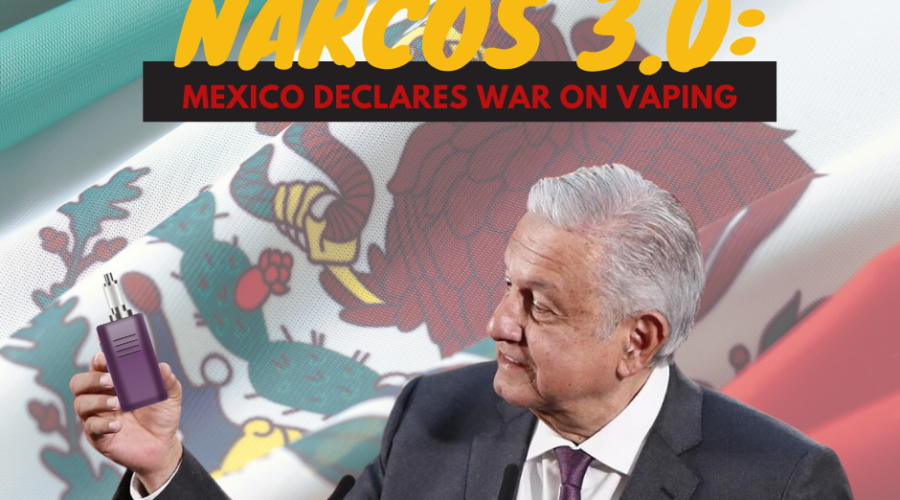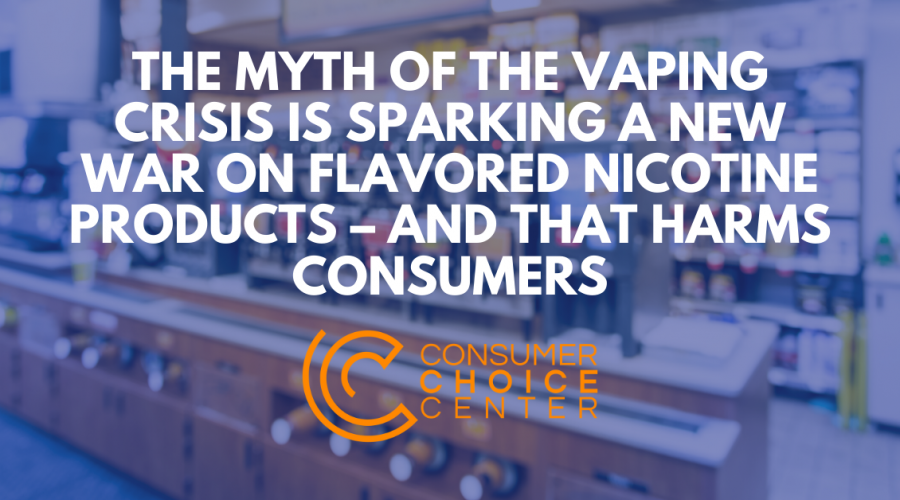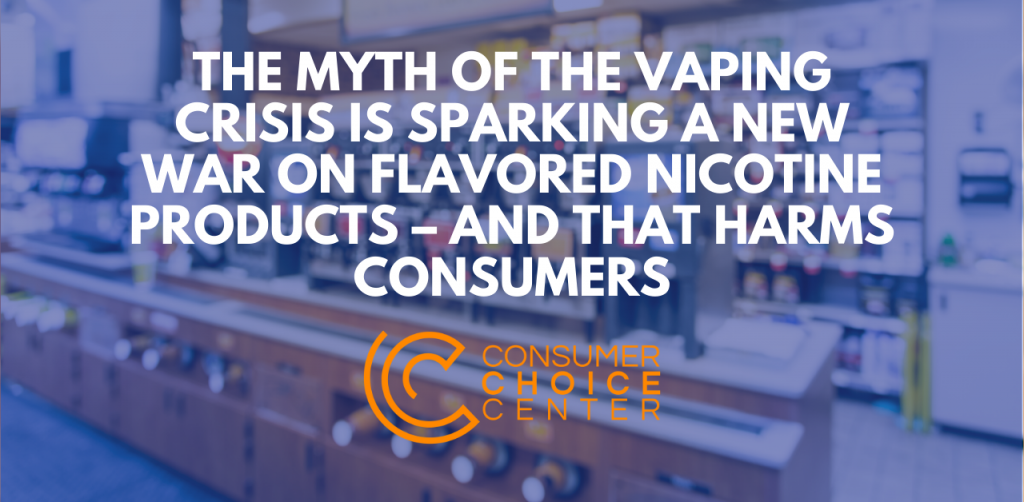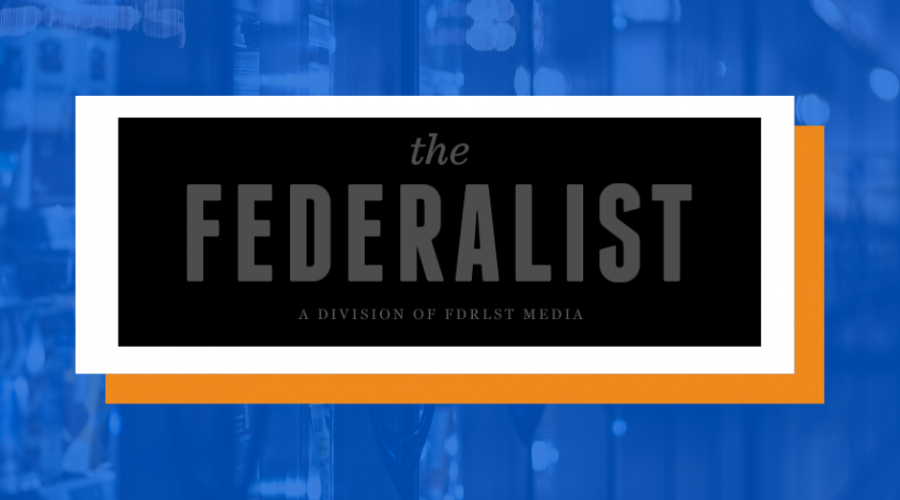Narcos 3.0: Mexico declares War on Vaping and repeats old prohibitionists mistakes
When Mexico’s far-left President Andrés Manuel López Obrador (or short AMLO) ran for office in 2018, he and his platform promised an end to the decade-long war on drugs in Mexico. He acknowledged that prohibitionist policies cause more harm than they do good. Ironically that same President issued a surprise presidential decree on February 19 banning the import of e-cigarettes, vapes, and heated tobacco products. The order even forbids the import of nicotine-free vaping liquids.
The Presidential decree relies heavily on scare tactics, invoking the U.S. “vaping crisis” to justify Mexico’s ban. But even the U.S. CDC and AMLO’s decree concede the “vaping crisis” was actually caused by illicit black market vaping liquids. Pushing Mexican vapers to the black market will exactly cause what the order claims it is trying to prevent: more lung diseases.
Even before this decree, Mexico had opaque vaping regulations, that had to be clarified by a supreme court ruling and allowed at least certain manufacturers to sell e-cigarettes to the country’s roughly 1.2 million vapers.
These vapers are now being left alone with no access to nicotine products that are less harmful than conventional cigarettes, and that in times of lockdowns and people spending most of their week at home thanks to COVID. Two scenarios are most likely to happen if the decree does not get annulled:
- Narcos 3.0: Mexico has a well developed black market for illicit substances, and, as regular Netflix viewers know, it serves as a massive transit hub for the global drug trade. It wouldn’t take much for organized crime to either smuggle legal vaping products from neighboring countries into Mexico and sell them on the black market or (even more concerning) sell counterfeited vaping liquids to Mexican vapers. The vaping crisis in the United States, which the Presidential decree instrumentalizes for its ban, was caused by illicit black market vaping liquids. Pushing Mexican vapers to the black market will exactly cause what the order tried to prevent: More lung diseases.
- Back to the ciggie: Even is the more dramatic scenario of a booming vaping black market might not come true (mainly due to the low margins on nicotine products compared to Cannabis or Cocaine), we would still see over a million vapers left behind. It is more likely that most of them will switch back to smoking regular cigarettes instead of switching to nicotine patches or entirely quit. That, in turn, would also lead to worse public health outputs.
We can see that AMLO’s decree will have serious, negative unintended consequences contrary to its own objectives.
Perhaps the most concerning is that the World Health Organization lauded Mexico’s vaping ban as a public health achievement, it fails to recognize that Mexico’s anti-vape stance will keep smokers and nicotine consumers locked in with combustible cigarettes. This policy deprives them of the choice to switch to the 95% less harmful vapes. The Consumer Choice Center’s interactive vaping map shows that up to 3.3 million additional Mexican smokers could switch to vaping if the government would emulate the UK’s progressive and science-based vaping laws.
So instead of cracking further down on vaping, Mexico should embrace tobacco harm reduction. Due to COVID and the parliamentary schedule, the Mexican Congress is currently out of session. Still, there is a window for legislative action when Congress returns to operation in the fall.
Consumer groups, vaping advocates, and the scientific community need to use this window of opportunity to explain more Mexican politicians and regulators the benefits of vaping and help busting myths around the United States’ vaping crisis. Initial protests against this misguided decree started already in March. This multi-lingual paper on the Myths and Facts on Vaping, written by my colleagues Yael Ossowski and Bill Wirtz explains the reasons behind the perceived vaping crisis in the US and is also available in Spanish. Probably an essential message in this paper for politicians is this one:
“MYTH #3: VAPING IS THE CAUSE OF RECENTLY REPORTED RESPIRATORY ILLNESSES
Much cause for concern of late has been a flurry of reports of illness and hospitalizations blamed on traditional vaping devices and liquids. The CDC has reported nearly 380 cases of lung illnesses related to vaping. Sensational headlines and opinion articles have convinced leaders in several states and even President Donald Trump to consider banning vaping flavors outright.
But careful analysis of the reported cases reveals that a vast majority of the patients with symptoms were found to have used illicit vape cartridges mixed with the cannabis compound THC.
A study in the New England Journal of Medicine that examined cases in Illinois and Wisconsin found that 84% of hospitalized patients report using illicit THC vaping cartridges prior to their illness. No illnesses have yet been tied to store-bought vaping pods or liquids containing nicotine.
To that end, two Wisconsin brothers were recently arrested in connection with a multi-million dollar operation that mixed various chemicals (including Vitamin E) with THC in cartridges meant for vaping devices, which they then sold illegally. Authorities have identified this large scheme spread across much of the Midwest as a culprit in the recent lung illnesses there.
What this reveals is that illicit vaping products sold on black markets, rather than licensed retailers, have actually caused the most severe of the lung illnesses reported in the media.
As such, a ban on regulated devices and liquids, whether with flavors or not, would not address the problem as it currently exists.
By pushing vaping into the black market and Mexican vapers going back to the cigarette, AMLO will (despite the thunderous applause from the World Health Organization) further weaken Mexico’s public health outputs. If he is passionate about fighting lung diseases he should make access to legal and safe ways of consuming nicotine easier and not harder. Everything else is just a stimulus program for organized crime and lung specialists.












